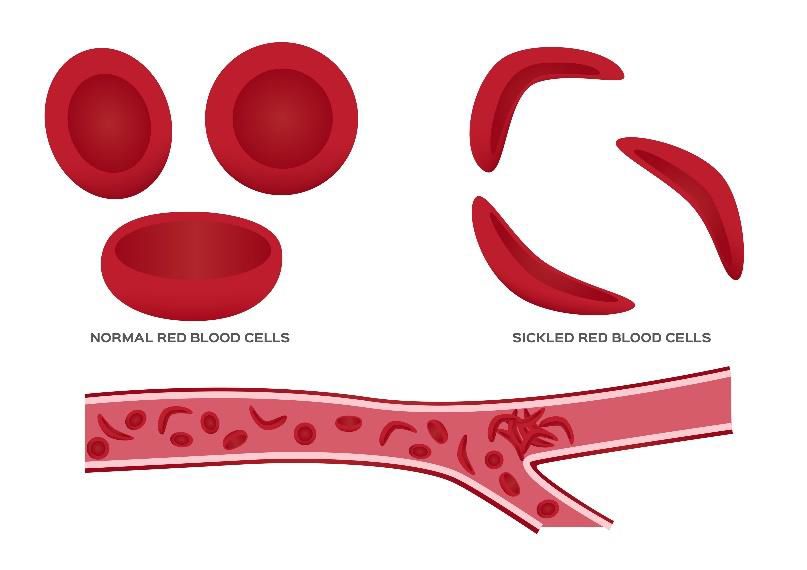- Published on
What Is Sickle Cell Disease?
- Authors
- Name
- Jake Konigsberg
- Role
- Founder
Sickle cell disease is a group of red blood cell disorders in which the shape of the red blood cell is distorted. Rather than being a round circular shape, the cells are crescent shaped. This crescent shape is due to a mutated and lower count of hemoglobin, the main protein in red blood cells that carries oxygen. As a result, the red blood cells carry less oxygen. Additionally, the crescent shape also enables red blood cells to clog and get stuck in blood vessels. These cells also die much quicker due to the fact that they easily break apart and do not easily pass through blood vessels. In fact, these cells live approximately 10% as long as normal red blood cells with sickle cells on average surviving 10-20 days whereas normal red blood cells on average survive 120 days.
The mutation in the hemoglobin is caused by a substitution of the amino acid (molecules which combine to form proteins) valine for glutamic acid on the beta global chain (a protein that forms a subunit of hemoglobin). This simple amino acid substitution greatly changes the protein resulting in its deformation and the crescent shaped blood cells characteristic of sickle cell disease.
